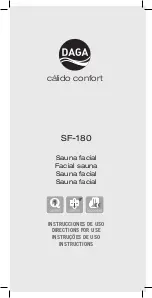
Figure 9
7.) Determine the length of vacuum breaker tube (F)
required to join the flush valve and fixture spud. Cut the
vacuum breaker tube, if required, to this length. Assemble
the vacuum breaker tube assembly and spud nut assembly
to the flush valve and fixture spud.
8.) Hand tighten spud nut (G) and vacuum breaker tube nut
(H) to fixture and flush valve. Adjust the valve assembly for
plumb. Tighten fixture spud nut (G), vacuum breaker tube
nut (H) and lock nut (D) with a wrench. Slide the escutch-
eon on the wiring connection back against the wall and lock
it in place with the allen set screw. Do not turn water on
until power is connected – see 9.
Figure 7
F
9.) ACTIVATION
Remove and discard the protective label (L) from in front of
the lens.
Normal valve operation will occur when the valve senses an
object (person). The LED will blink brightly once and then
dimly three times about a second apart. There will be a
pause and then a double blink. At that point the valve is
charged. When object leaves view of the sensor, valve will
activate. This six second sensing cycle will prevent the
valve from flushing needlessly when someone walks by.
If special circumstances require adjustment of the sensing
distance, see Appendix A - Changing Activation Distance.
L
D
H
G
9.) Wiring installation (see fig. 8)
A. Remove the two cover retaining screw and lift the
flushometer top cover.
B. Run fish tape through the valve, cover tube, and wall to
the power supply or optional junction box.
C. Pull a pair of 18 ga. wires from the power supply or
junction box back through the wall into the valve.
D. Valve will either have a +/- quick connection or two wire
nut connectors for attachment of power leads. Connect
DC power wires with proper polarity to red (+) and black
(-) wires and secure with wire nuts. Tuck wires into
housing being careful not to crimp any wires
E. Reinstall the flushometer cover using the two button
head allen screws. There are two extra screws in the
top cover in case of loss.
F. Turn on the power and check the flushometer for sensing
function.
Figure 8
Notes:
1. Failure to observe proper polarity will result in failue of
the sensor and/or power converter.
2. Use #18 awg for interconnections.
3. The maximum number of actuators per power converter
is eight.
J

























